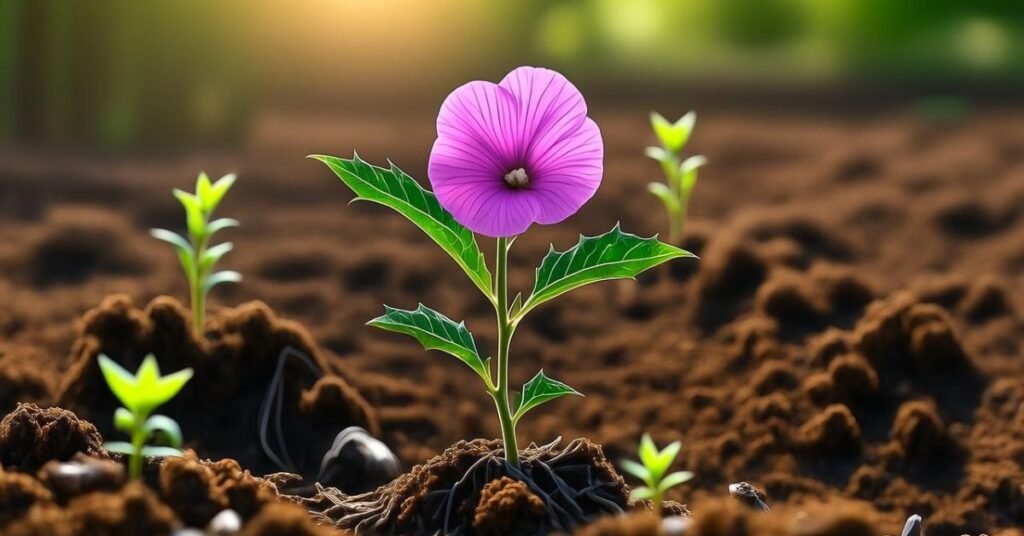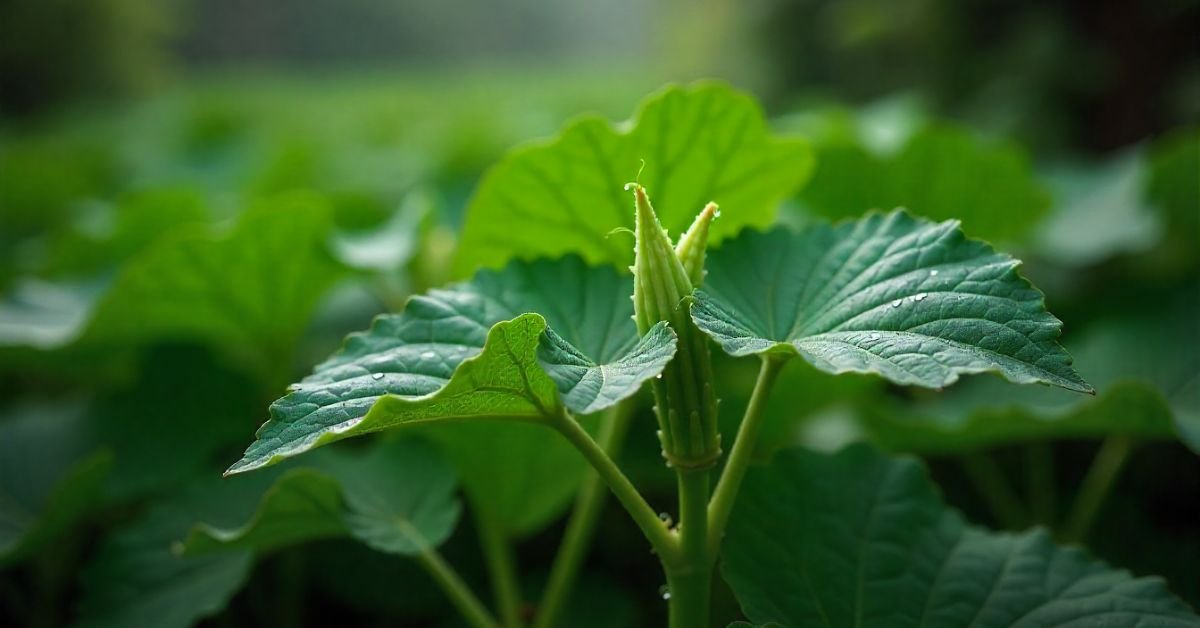Introduction
It’s possible to create a fresh plant using cuttings or seeds from the original. For the okra leaves plant, it usually starts from seeds. You can plant these seeds in soil, and with proper care, they will grow into healthy plants with fresh green leaves.
Many gardeners enjoy growing okra because it is simple and rewarding. The leaves are not only attractive but also useful. With a little effort, you can have a steady supply of fresh leaves at home. This makes the plant popular for both beginners and experienced growers.
It is important to choose healthy seeds and soil that drains well when propagating okra leaves. Place the pot in a sunny spot and water only when the soil feels dry on top. With patience and care, you will soon see new growth. This easy process makes the plant a great addition to any garden.
How to Grow Okra Leaves
Okra leaves grow best in warm weather. Soil that is loose and well-drained is the best place to plant seeds.Choose a sunny spot, as the plant needs at least 6 hours of sunlight daily.Don’t overwet the soil.
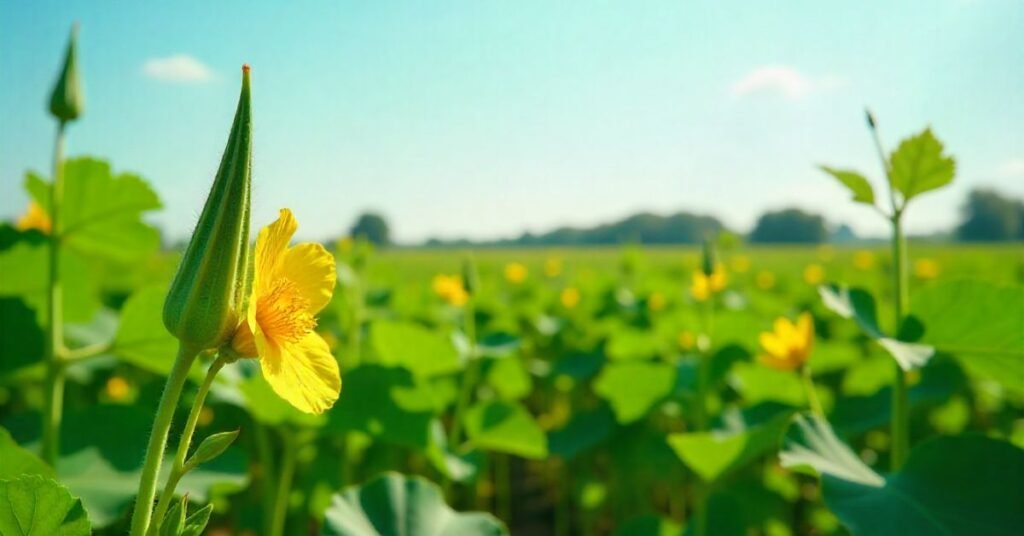
When the soil feels dry on top, water the plant. Add natural compost or fertilizer to help it grow strong. With proper care, the okra leaves will stay green and healthy. Soon, you can enjoy fresh leaves right from your garden.
Description/Taste
Okra leaves are large, green, and shaped like a hand with many lobes. They feel slightly rough but are tender when cooked. The leaves are an important part of cooking in many cultures around the world. Their mild flavor makes them a great addition to different dishes.
Taste of okra leaves:
- Mild and earthy flavor
- Becomes soft when cooked
- Adds freshness to soups and stews
- Blends well with spices and herbs
- Light taste that does not overpower meals
Geography/History
People believe okra first grew in Africa. From there, it spread to Asia, the Middle East, and later to the Americas. The plant loves warm weather, which is why it grows well in tropical and subtropical regions.
People have used okra leaves and pods for cooking and medicine for centuries. Many cultures value the plant for its health benefits. Today, it is a common crop in countries with hot climates. Its history shows how useful and important it has been around the world.
Seasons/Availability
Okra leaves need warm weather to grow well. People mostly grow them in spring and summer. In hot regions, they can grow for a longer time. The leaves stay fresh as long as the plant gets enough sun and water.
In local markets, okra leaves are often sold during the warm months. Some tropical areas offer them almost all year. The timing depends on the climate of each region.
| Season | Availability of Okra Leaves |
| Spring | Planting and early growth |
| Summer | Peak harvest season |
| Early Fall | Limited availability |
| Winter | Rare in most regions |
Nutritional Value
Okra leaves are full of healthy nutrients. Fiber, vitamins, and minerals are abundant in them. Eating them helps keep the body strong and active. They are low in calories, making them a smart choice for a healthy diet.
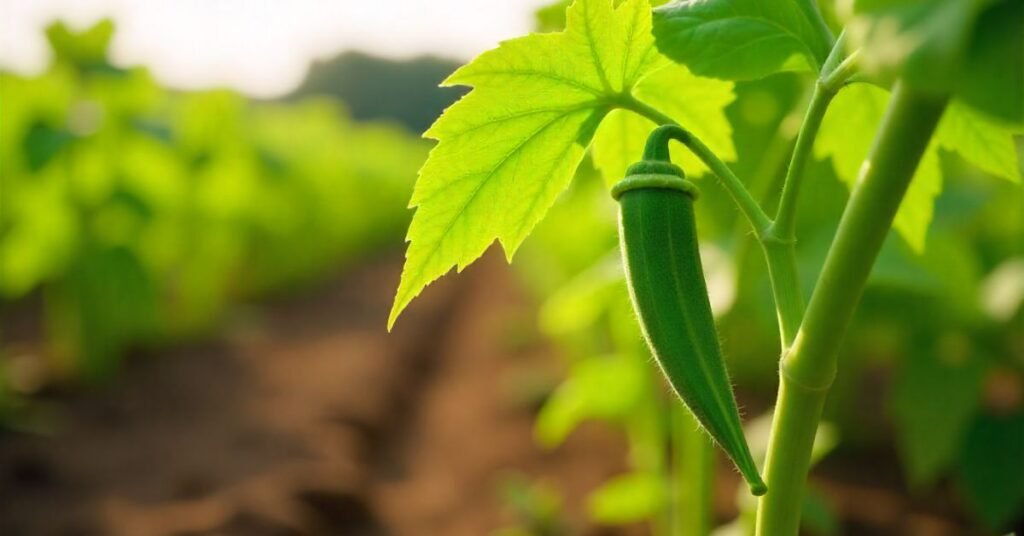
Nutrients in okra leaves:
- Vitamin A for good vision
- Vitamin C for strong immunity
- Calcium for healthy bones
- Iron for better blood health
- Fiber for good digestion
- Low calories for weight control
Ethnic/Cultural Info
Okra leaves are added to many traditional recipes across the world. In Africa, they are often cooked in soups and stews. In Asia, the leaves are used in herbal remedies and meals. Different cultures value them for both taste and health. They are seen as a natural food that connects families to their roots and traditions.
Applications
Okra leaves are used in cooking, medicine, and home remedies. They can be boiled, fried, or added to soups and stews. Many people use them to improve health because they are full of vitamins. In certain cultures, the leaves are also applied for skin and hair care.
They are popular because they are natural and easy to use. The leaves can be fresh, dried, or cooked depending on the need. Their soft taste makes them a great match with many foods.
| Application | How They Are Used |
| Cooking | Soups, stews, curries, and stir-fries |
| Medicine | Herbal teas and natural remedies |
| Nutrition | Source of vitamins, minerals, and fiber |
| Skin Care | Used in traditional pastes for healthy skin |
| Hair Care | Applied in natural treatments for strength |
Recipe Ideas
Okra leaves can be cooked in many tasty ways. They are often added to soups and stews for a soft and earthy flavor. You can also sauté them with garlic, onion, and spices for a simple side dish. In some places, the leaves are mixed with rice or lentils for a healthy meal.
Another idea is to use fresh okra leaves in smoothies or herbal teas. They can also be dried and stored for later use in cooking. Their mild taste makes them easy to pair with different foods. These simple recipes help you enjoy their flavor and health benefits.
Can You Eat the Leaves of Okra?
Yes, you can eat the leaves of okra. They are safe and healthy to use in food. The leaves are soft and mild in taste. People cook them in soups, stews, or stir-fries. They are also used fresh in salads or boiled as greens. Eating okra leaves is a simple way to add more nutrition to your meals.
Current Facts
Okra leaves are gaining more attention for their health value. Many people now use them in cooking and natural remedies. They are grown widely in warm regions across the world. Farmers like them because they are easy to grow and harvest.
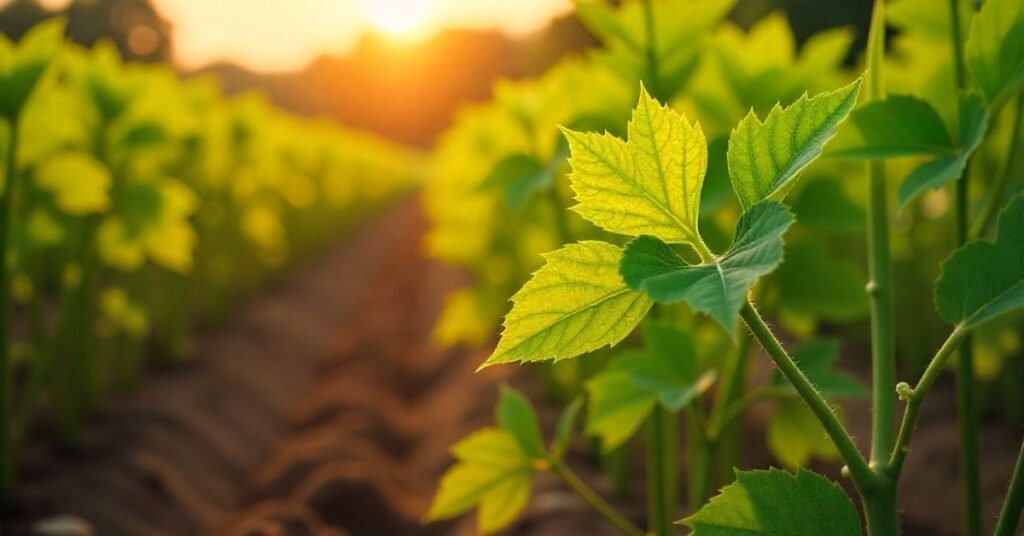
Current facts about okra leaves:
- Popular in African, Asian, and tropical dishes
- Rich in vitamins, minerals, and fiber
- Grown mostly in hot and sunny climates
- Used in food, medicine, and home remedies
- Becoming more popular in modern healthy diets
Why Is My Okra Leaves Plant Turning Yellow?
Okra leaves can turn yellow for many reasons.The main reason is usually overwatering or soil with poor drainage. Sometimes, the plant does not get enough sunlight or nutrients. Pests and diseases can also make the leaves weak and yellow. Checking the soil, light, and health of the plant can help fix the problem.
Learn More About Okra Leaves
Okra leaves are green, broad, and full of nutrients. They are used in many traditional dishes around the world. The leaves are soft when cooked and have a mild taste. They are also valued for their health benefits, like strengthening immunity and supporting digestion.
Growing okra leaves is simple if you provide sun, water, and good soil. They thrive in warm weather and are easy to care for. You can cook them fresh, dry them for later, or use them in teas and remedies. Learning more about okra leaves helps you enjoy their flavor and health value.
Conclusion
Okra leaves are simple to grow and full of health benefits. They are easy to use in cooking and home remedies. With proper care, the plant gives fresh and green leaves. Adding them to your meals is a natural way to stay healthy.
FAQs about Okra leaves
1. Can you eat okra leaves?
Yes, okra leaves are safe to eat. People often use them in soups, stews, and stir-fries.
2. What do okra leaves taste like?
They have a mild, earthy taste and become soft when cooked.
3. How do you grow okra leaves?
Plant seeds in warm soil, give plenty of sunlight, and water only when the top soil is dry.
4. Why are my okra leaves turning yellow?
This may happen due to overwatering, poor soil, lack of nutrients, or pests.
5. Are okra leaves healthy?
Yes, they are rich in vitamins, minerals, fiber, and are low in calories.

